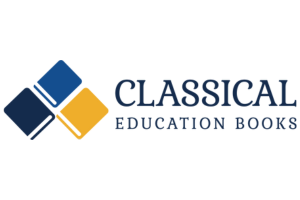Clear the Confusion about Chapter Books

Some Confusion
A simple and universal definition is not so easy to come by and the confusion seems to enter with the higher-level chapter books. Where is the cut-off? At what point is a book considered a novel? And does it even matter?
Early Reader Books, Chapter Books and Intermediate/Middle-Grade Novels are all designed with a particular reading level in mind and they have distinct differences. Early Readers are designed with beginners in mind. They have pictures, and the words, font and spacing are chosen carefully to fit a new reader’s ability and stamina for reading. Intermediate/Middle-Grade novels are designed for more advanced readers; they are full-length novels but they are still designed with children in mind. The content and formatting are more mature.
What is a Chapter Book?
Chapter books fit in between those two categories and are generally geared towards 7-10-year-olds. They are usually a moderate length, roughly 2,000-10,000 words and the writing is more complex.
Chapter books are an important category of books and are often considered “make or break books” because they are the gateway to more advanced reading. Chapter books are not full-length novels but they are divided into chapters. The chapters are short, they may contain the occasional illustration, but they contain large blocks of text. A well-formatted chapter book considers the font choice, spacing, and the amount of white space on a page as the entire point of chapter books is to NOT be intimidating to a young reader.
Although chapter books are an important tool in bridging the gap between early reader books and novels, not all children need them. Some children bypass chapter books or move through the chapter book stage very quickly and that’s ok. The hurdle here is keeping them challenged without introducing themes beyond their years.
It is equally common to have children for whom chapter books become a staple for an extended period of time. These fledgling readers also need carefully selected books but for different reasons. We’ve come up with a few things to consider as you carefully curate your chapter book library.
Chapter Book Tips
1. Your Chapter Book Library doesn’t have to be filled with drivel. There is quality literature to found in chapter books.
2. If you are looking for chapter books to spark interest in reading start with something your children are already interested in.
3. Consider the length of the book and the length of the chapters as not all chapter books are created equal. Start small, especially for those wobbly readers. We don’t want to scare them off. Give them a quick win!
3. Take a look at the font size and spacing. The tiny type and compressed spacing can be overwhelming for children as they transition to independent reading.
4. Consider a “you read to me and I read to you” approach. This could be page by page or chapter by chapter.
5. Don’t stop reading aloud to your children. It is invaluable even for advanced readers. If you want to learn more about connecting with your family through reading aloud then you’ll want to get your hand on this book. The Read-Aloud Family
It’s important to understand what you are looking for when you are building a stack of chapter books for your young readers. Take care to match your reader with the right book as you don’t want to reading to become drudgery.
More of Our Favorite Chapter Books:
Adventures with Waffles
The Whipping Boy
The Hundred Dresses
Sarah, Plain and Tall
by Adrianne Curwen
Adrianne is a wife to a public-school educator/administrator and a homeschooling Mama to seven children, ranging in age from 8 to 24 and in 2021 the family added a son-in-law to the bunch. She believes that we have a unique opportunity as homeschoolers to design individualized education that suits giftings, interests, and passions. She and her husband have used a blend of registered homeschooling, enrolment with independent DL schools, and participation in public trade school programs to design individualized programs for their children. She is passionate about using as many read-alouds, picture books, novels, and conversations to educate her children but also gets excited by the amazing homeschool-designed curriculum that’s out there. Adrianne is thrilled by her new role as Communication Specialist for Classical Education Books and is grateful to have an opportunity to learn something new. She is grateful, every day, for her saviour, Jesus Christ, and has no greater joy than when she sees her most important missions field walk with Him.
